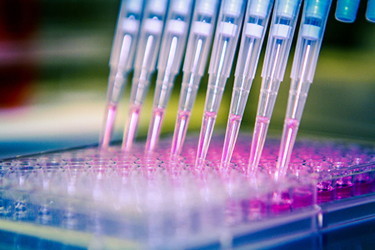Cell Culture Media & The Emergence Of Blood-Free Components

To produce the necessary components for biopharmaceutical treatments, scientists leverage cell culture to optimize the production of viruses, viral vectors, and cells for their respective applications. Culture medium is designed to offer a biocompatible environment for biologics to proliferate. The demand for media arose in 1882 when the first tissue preservation experiment was performed. Sydney Ringer developed Ringer’s solution to keep frog hearts beating after being removed from the body. Ringer’s solution was a balanced salt solution designed to maintain physiological pH and osmolality specifications. Numerous other synthetic solutions were designed following the release of Ringer’s experiments; however, embryologist, Ross Harrison, began to leverage natural media in 1907 with the use of a lymph platform. Harrison isolated pieces of frog embryonic tissue and monitored nerve fiber growth in lymph – fluid of the lymphatic system containing white blood cells.2,3 This successful experiment paved the way for the use of natural media to improve the maintenance and proliferation of cell lines.
Throughout the history of cell culture, media have evolved and expanded to encompass serumcontaining media, serum-free media, xeno-free media, protein-free media, chemically defined media, and blood-free media. These forms of media ultimately decrease or eliminate the inclusion of serum and serum derived proteins. Reducing serum in culture is helpful for many reasons: decreased supply chain risk, improved consistency, fewer regulatory/safety concerns, etc. More recently, companies have managed to eliminate the inclusion of serum and serum derived proteins in their media while maintaining performance and consistency from lot-to-lot; the elimination of serum and serum derived proteins defines blood-free media. For this reason, the concerns associated with serum have, in theory, been mitigated. In practice, many pharmaceutical and biotechnology companies continue to incorporate serum and/or serum derived proteins in one or more of their manufacturing processes steps; therefore, the concerns remain. For the remainder of this paper, the types of media are going to be evaluated based on the benefits and risks associated with each.
Get unlimited access to:
Enter your credentials below to log in. Not yet a member of Cell & Gene? Subscribe today.
